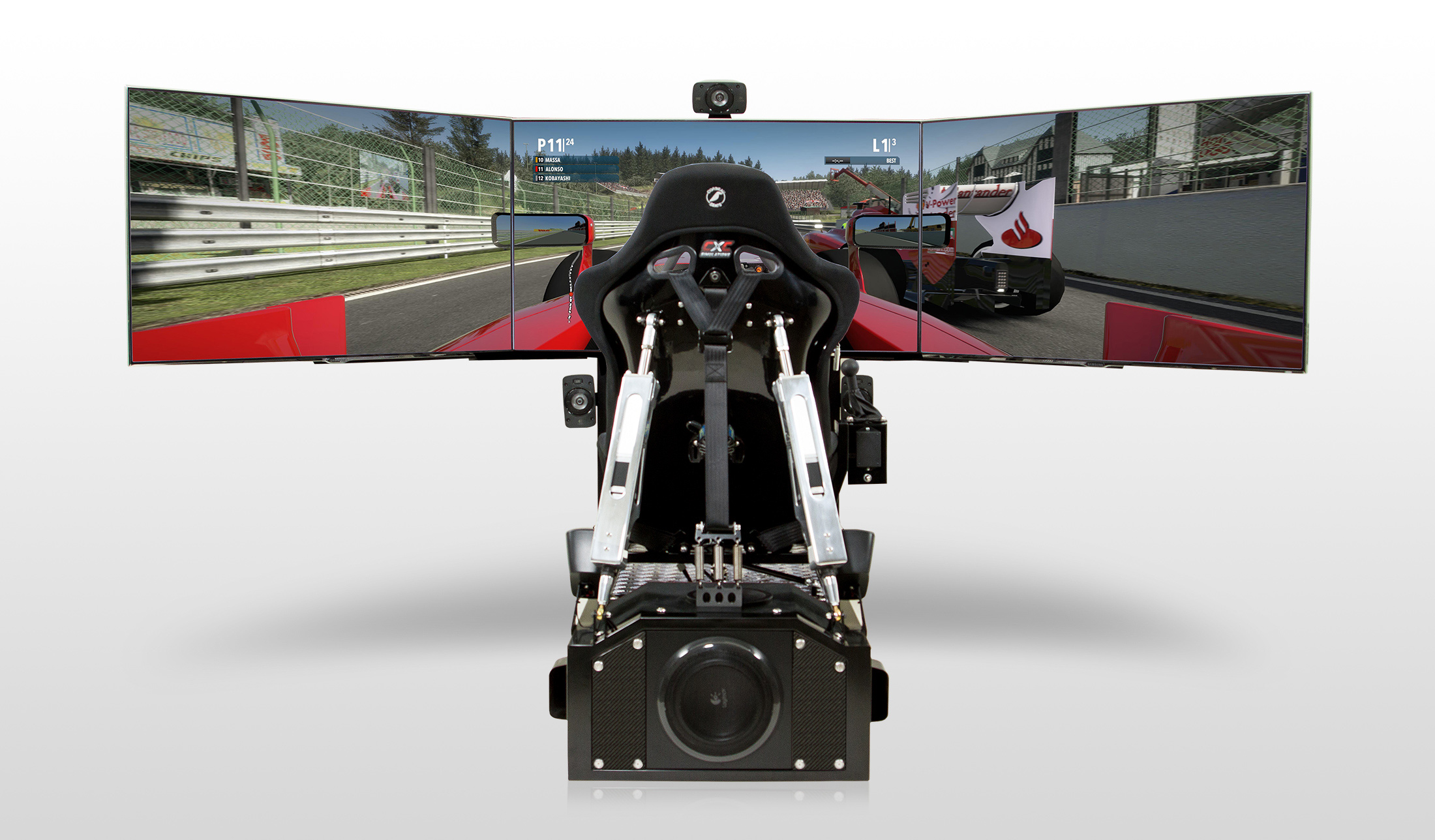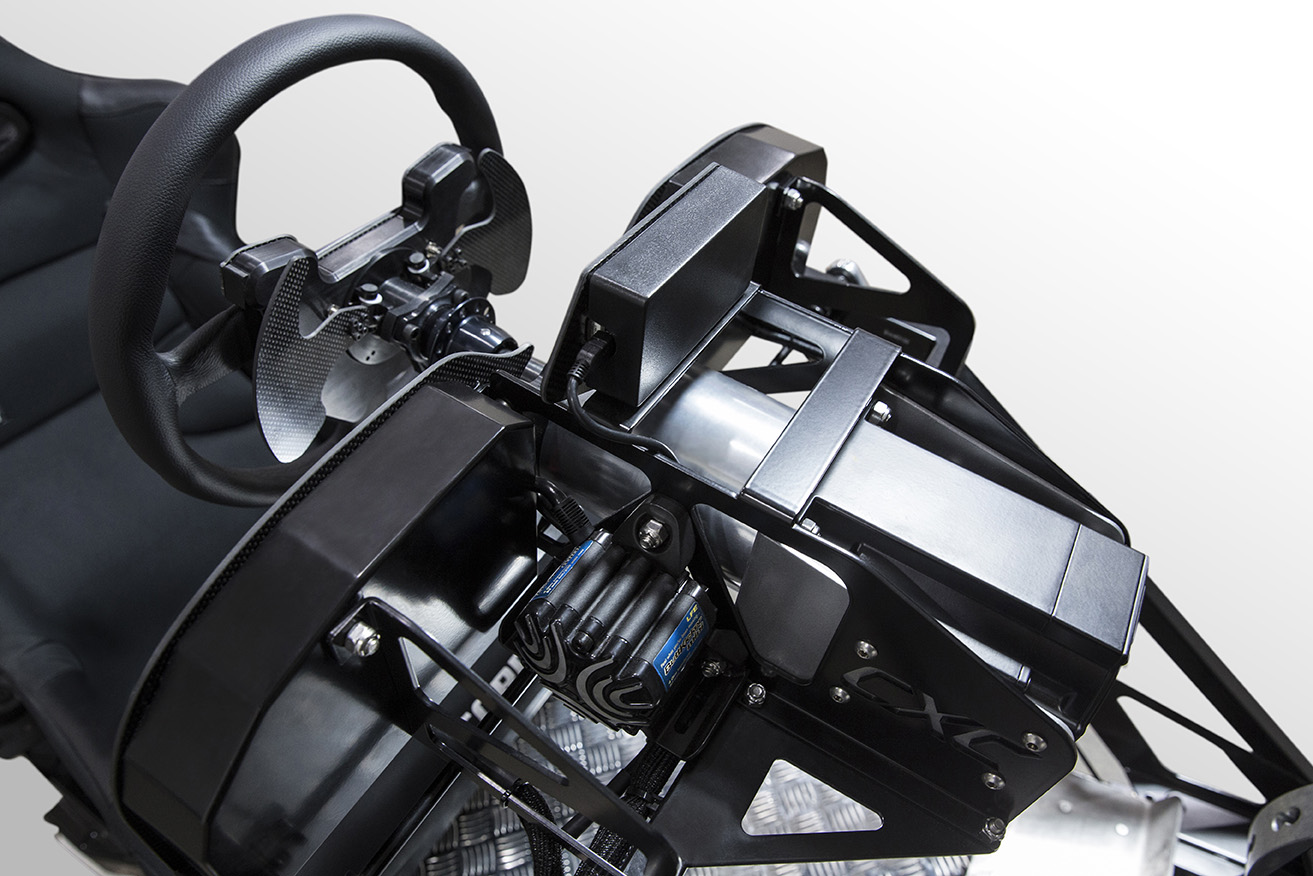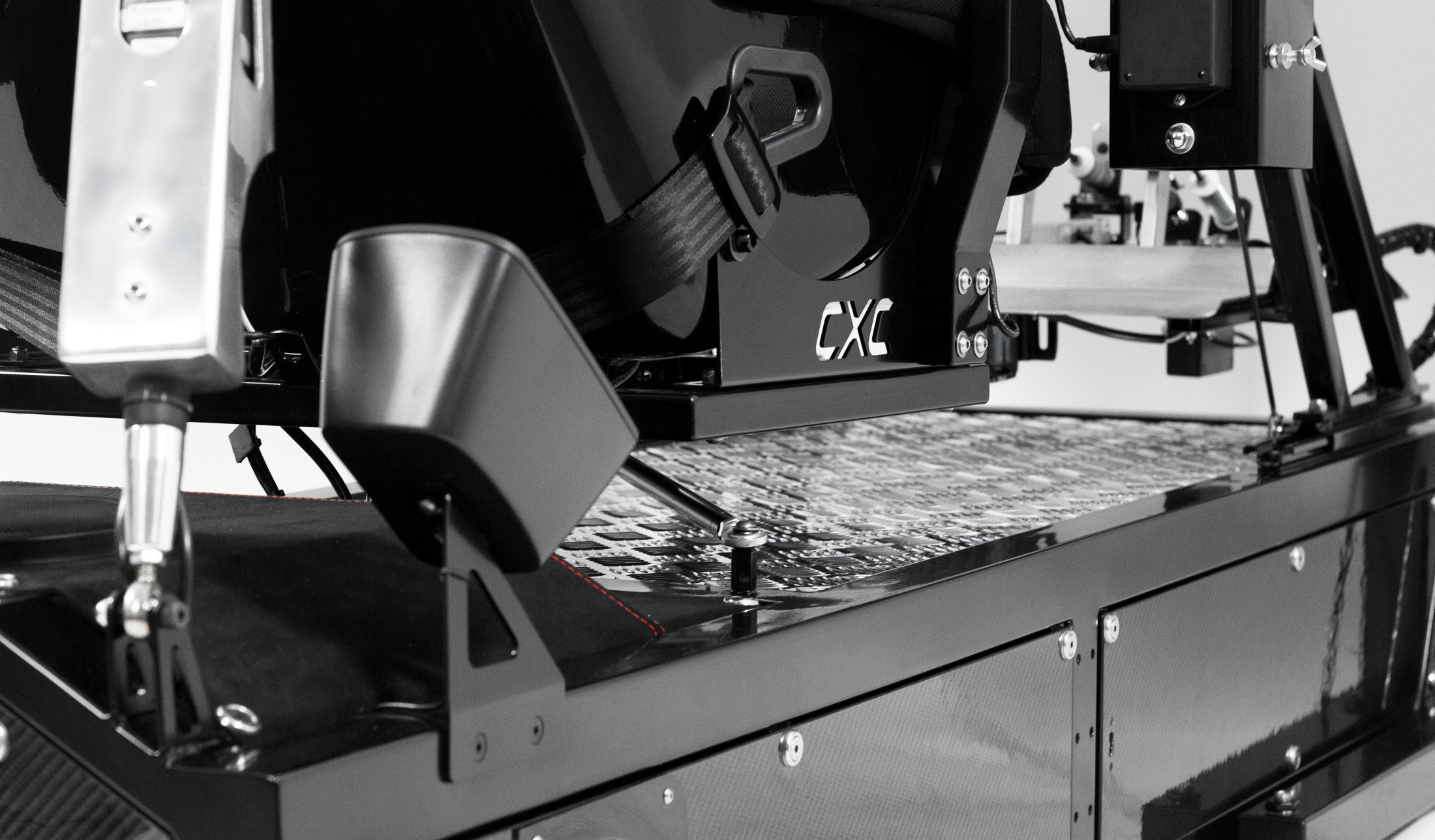So You Want to Buy a Racing Simulator.
That’s great! We happen to like racing simulators too: they are an ideal way to stay sharp between races, improve your skills and work with driver coaches in a low-risk environment. And they’re awesome for parties!
Potential customers often ask us about other types of simulators on the market, including which features they should evaluate. Rather than try to compare all of the available models, we thought it would be helpful to take a look at a few of the most important considerations.

Construction
Consider this as you would the chassis of a racecar. You’ll want light weight and strength because your investment has to stand up to thousands of hours of use. Be sure to ask about frame materials. Cheaper materials, such as plastics and woods may not stand up to vigorous motion systems. They also tend to isolate high-frequency vibrations – the ones that make you feel more connected to the road.
Physical Feedback
Find out what kind of physical feedback systems are used. Aside from the main motion system, are other vibratory systems included? Adjustable force feedback steering and pedal systems? Are these off the shelf consumer systems or proprietary systems designed with racing simulation in mind? Consumer grade systems have limited fidelity, whereas a system built for racing simulation will have much more detail. For example, a small bump will feel like a small bump, and a large bump, a large bump, etc. What are the kinds of feedback that you will experience from the driver’s seat? Simulation is so much about feel, so really, you have to try it out in person.
Software
Contrary to what most people think, this is not a big differentiator between the currently available simulators. Almost all of them can run the full range of popular PC-based titles. That said, think of software as the music and a simulator as an instrument that plays the music. The notes are always the same, but the higher the quality of the instrument, the finer the quality of the sound (driving experience) that can be enjoyed. Again, something that has to be tried in person.

Displays
Believe it or not, this too is a relatively minor concern. For maximum immersion, you should try to fit the largest screens that will fit into your available space and, of course, make sure they are from a quality manufacturer. However, definitely look into new virtual reality (VR) options that exist for a given simulator – ideally, one that can easily switch between the two views, as sometimes you’ll want one over the other.
Control Systems
Find out who makes the steering wheel and pedals. Consumer-grade products are made mostly of plastic, and while they work well for simple home entertainment use, their construction won’t stand up to professional and commercial use. They also lack the power and fidelity of professional-grade, direct-drive systems.
Audio Systems
This is another area where there is very little to differentiate between the available simulators on the market. You want 5.1 surround sound, 500 watts or above.

PC
Who builds the machine’s PC? Does it have robust, high-quality components, ample power and the latest generation of graphics cards? This is an area where there could be hidden cost cutting. Is the PC and all of the wiring built into the frame of the simulator, or is it in a separate desktop case? Ideally, it’s built in, making the unit cleaner, easier to move and aesthetically more pleasing.
Installation and Support
Aftercare support, warranty and training are crucial. These are complex machines with many moving parts and you need to feel comfortable that your simulator company has your back. Ideally, they should be able to set up your machine, train you on-site and have it ready for you to begin racing. And this should be included in the base price of the simulator.
The length of the warranty is not the only important metric. How many employees are dedicated to support? What are the business hours for tech support? If you have an opportunity, test the availability of your selected manufacturer’s support system by trying to reach them after hours. Also consider that software is now becoming so complex that sometimes you can simply forget how to do something. It happens. Or someone could trip over and inadvertently unplug a cord, and now you’re unable to get back to your preferred car and track. Or perhaps you simply decide that you want a new car or track installed on your software. These are all times when you’d like to get someone on the phone very quickly.
Obviously, we hope you’ll consider a CXC Motion Pro II as you shop for your professional-grade racing simulator, but feel free to consider us a resource to any questions about the full range of equipment you’re evaluating. Happy hunting!

